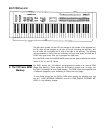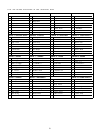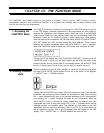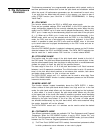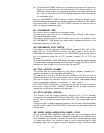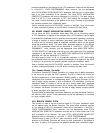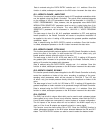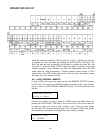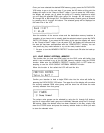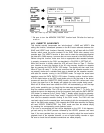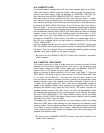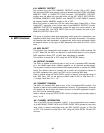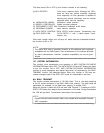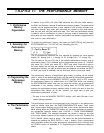
imately 1/4 semitone—is achieved with a setting of 99. The detune effect is produced
by simultaneously increasing the pitch of channel A while decreasing the pitch
of channel B.
Use the DATA ENTRY control or -1/+1 switches to enter the data for this parameter.
Once the DUAL MODE DETUNE function is called, subsequent presses on the
A2 button increment the data value.
5. Memory
Management
Functions
The memory management functions include functions for loading voices from the
DX21’s internal ROM voice memory, for storing and loading RAM memory voices
to and from cassette tape, initializing the voice memory, recalling voice data from
a special “safety” buffer memory, and turning the DX21 memory write protect
function ON and OFF.
A9: EDIT RECALL
In addition to the voice edit buffer, the DX21 has a special edit recall buffer memory
which maintains the last edited voice data. If, after editing or creating a new voice,
you inadvertently call new data into the voice edit buffer by pressing one of the
voice selector buttons before storing the edited voice data, the voice you had spent
so much time editing will be erased from the edit buffer. If only one error of this
type has been made, the edited data still resides in the edit recall buffer and can
be recalled into the voice edit buffer using this function.
When this function is initially called the LCD will read “Recall Edit ?". Confirm your
intention to recall the data into the voice edit buffer by pressing the DATA ENTRY
YES button. The DX21 will then reconfirm with “Are You Sure ?". Press the DATA
ENTRY YES button again to actually execute the edit recall function. The EDIT
mode will then be automatically entered, and the voice edit buffer will contain the
data called from the edit recall buffer. Pressing another function button, a PLAY
mode button or the EDIT mode button during the above process will abort the edit
recall function.
A10: INIT VOICE
This function sets all voice parameters in the voice edit buffer to their “initialized”
values, permitting voice programming from an effectively neutral set of values—a
“clean slate”.
15



